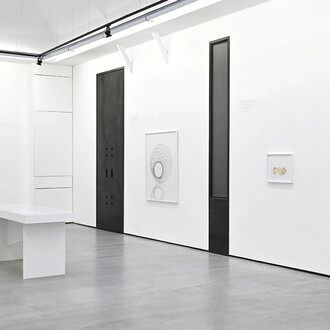Elements brings together photographers Mathieu Bernard-Reymond, Benoît Jeannet and Benoît Vollmer, who each explore the landscape genre.
Dominant in artistic photography during the mid-70s, this subject lost momentum at the turn of the 21st century. The advent of the internet, the elimination of geographic distances, the abundance of images and the increase in tourism, founded a new era where the photographic representation of nature became banalized and commonplace.
Landscape nonetheless remains an essential part of photography and more generally of pictorial art. Thus, the exhibition Elements, curated by Matthew Gafsou, launches a reflection on the future of the photographic representation of nature and its composite elements, thanks to the experimental and conceptual vision of these three artists: Mathieu Bernard-Reymond, Benoît Jeannet and Benoît Vollmer.
In line with changes in technology we observe in the here and now, the three photographers experiment with the photographic medium to produce an effect of movement, which comes from the scrambling of the codes of landscape representation. A dreamlike and supernatural universe emerges from this endangering of the reference point.
In Interruption, Mathieu Bernard-Reymond suspends the calculation of software that creates 3D landscapes, leaving visible the artefacts of the process in action in the form of polygonal shapes. The artifice, thus unveiled, fits in the landscape without undermining the real effect.
Benoît Vollmer reconstructs alpine scenery from hundreds of images. The natural aesthetic is then disrupted by the overthrowing of the skyline that fades away provoking a suffocation of the infinite rocky views.
The mineral element of the rock is also explored by Benoît Jeannet in an index of motives that constitute the landscape. This methodical approach, serving reason, turns out to be a trick once we learn that some of these photographed forms are artificially manufactured in a studio. Nature is therefore staged, through challenging the real and underlining once again the crisis or the futility of the paradigm.
The connection of photographs to the pictorial landscape genre nonetheless demonstrates the strength of the form. The evolution passes through a discourse that is no longer sociological, urbanist or geographical, but that questions our instinctive relation to what comes from the outside.



















